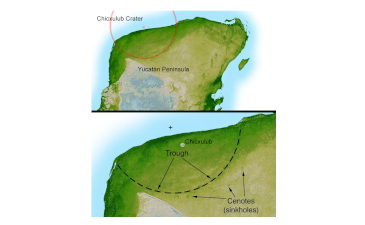Rapid Adaptation after Catastrophe
Psalm 104:6-7
“Thou coveredst it with the deep as with a garment: the waters stood above the mountains. At thy rebuke they fled; at the voice of thy thunder they hasted away.”
 One of the frequent objections to biblical creationism, voiced by evolutionists, is that they cannot see how all the modern species of animals could have spread over all the world after such a catastrophic event as a worldwide Flood. Coupled with this is their frequent allegation that we believe Noah took two of every species on to the Ark. We do not accept that. Noah took two of every kind of land and flying vertebrate on to the Ark, though fourteen of the clean animals. Modern species have adapted from these kinds since the Flood by speciation – natural selection within an existing gene pool. This, of course, is not biological evolution, which would require, were it possible, the spontaneous generation of new genetic information.
One of the frequent objections to biblical creationism, voiced by evolutionists, is that they cannot see how all the modern species of animals could have spread over all the world after such a catastrophic event as a worldwide Flood. Coupled with this is their frequent allegation that we believe Noah took two of every species on to the Ark. We do not accept that. Noah took two of every kind of land and flying vertebrate on to the Ark, though fourteen of the clean animals. Modern species have adapted from these kinds since the Flood by speciation – natural selection within an existing gene pool. This, of course, is not biological evolution, which would require, were it possible, the spontaneous generation of new genetic information.
Evolutionists have long believed that a major extinction event, killing most dinosaurs, occurred as a result of a massive asteroid impact at Chicxulub on the Yucatán Peninsula in Mexico. A new evolutionary theory suggests that evolution could have been very rapid after this catastrophe. Although we do not accept that the Chicxulub catastrophe happened in the way that they suggest, at least modern evolutionists are conceding that change can be very rapid. Hence, the evolutionists’ objection to the creationist model of very rapid speciation (not evolution) after the Flood is completely undercut by their new ideas. As usual, the Bible speaks the truth in all things and can be relied upon for the history of the world.
Prayer: Thank You for the truth of Your word. Thank You, Lord, that You saved Noah and his family from the Flood and that this is a picture of the salvation from our sins that You grant to those who put their trust in You. Amen.
Author: Paul F. Taylor
Ref: Geological Society of America. “Evolution after Chicxulub asteroid impact: Rapid response of life to end-cretaceous mass.” ScienceDaily, 14 July 2020. <www.sciencedaily.com/releases/2020/07/200714121748.htm>. Image: NASA, Public Domain.
© 2022 Creation Moments. All rights reserved.